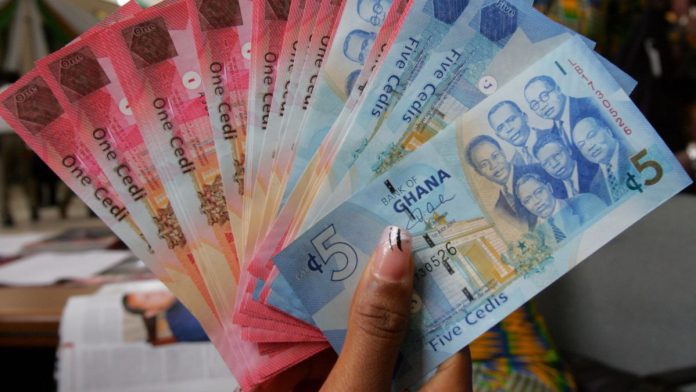The cedi is expected to experience modest stability against its biggest trading partners, with a cocktail of factors such as the recent coupon payment for new bonds, reduced import demands and foreign exchange (FX) to oil players to offset pressures of increased demand from corporate entities.
Since the beginning of the year, the cedi has depreciated approximately 22 percent against the U.S. dollar. However, it has managed to stay within a fairly stable range – oscillating between 11.01 and 11.45 against the dollar over the past few weeks.
“While we envisage an increase in corporate demand and a possible offshore FX repatriation from the coupon payments on the new bonds, we expect the GH¢ to gain a cushion from this week’s BDCs FX auction,” Databank’s analysts stated.
For GCB Capital, a market watcher, the ongoing rally of the US dollar and tightening FX liquidity conditions pose a degree of risk to the cedi’s stability. However, it expressed optimism regarding fiscal improvements and the recent coupon payment, which are expected to improve market sentiment.
The Treasury, two weeks ago, provided settlement of the about GH¢2.4billion first coupon payment of new bonds under the Domestic Debt Exchange Programme, a development which allayed fears over its ability to fulfil its obligations. Of the coupon payment, a significant portion – GH¢5.37million – was allocated to individual bondholders.
GCB Capital however cautioned that the cedi remains susceptible to short-term shocks if FX liquidity conditions remain tight.
“The cedi remains vulnerable to shocks in the immediate term, and the Cedi could trade on a tightrope in the week ahead if FX liquidity conditions remain tight,” the research arm of GCB Capital noted.
Meanwhile, analysts at Constant Capital believe that the cedi is benefitting from reduced imports and lower demand pressure for FX. Currently, a significant trade surplus has boosted the nation’s current account to a surplus of US$849million in first-half of the year, which translates to 1.1 percent of Gross Domestic Product (GDP) – including a 13.5 percent year-on-year decline in imports – compared to a deficit of 1.5 percent of GDP around the same time last year.
Analysts at Constant Capital are anticipating certain expected FX inflows toward the year-end, including a US$600million International Monetary Fund (IMF) disbursement and the cocoa syndicated facility.
“The local currency seems to be benefitting from reduced imports and lower demand pressure for FX, ahead of certain expected FX inflows toward year-end – the US$600million IMF disbursement and COCOBOD debt syndication.”
This broad sentiment was similarly shared by AZA Finance, which predicted that the cedi will remain relatively stable thanks to a steady flow of forex to accommodate retail needs.
“We expect the GH¢ to remain relatively stable with a steady flow of forex to accommodate retail needs,” AZA Finance said in a note on the subject.



